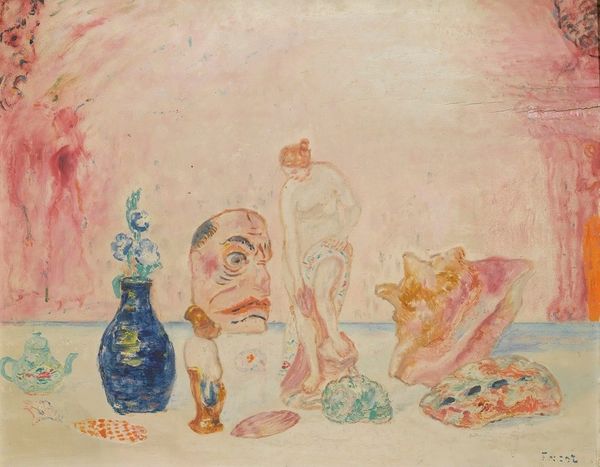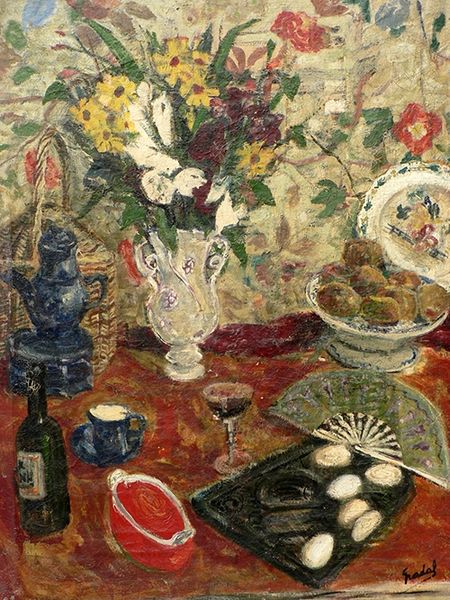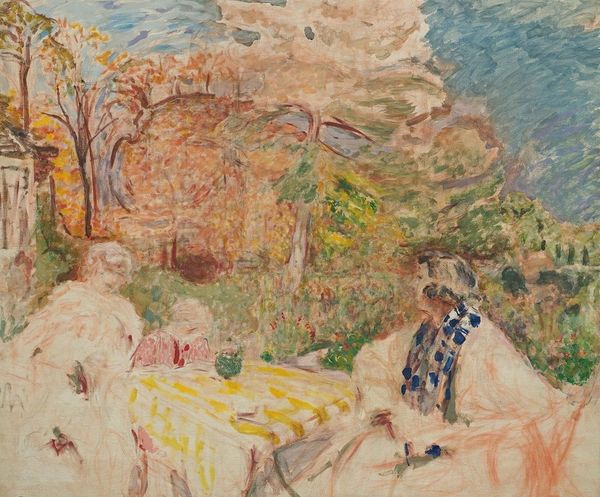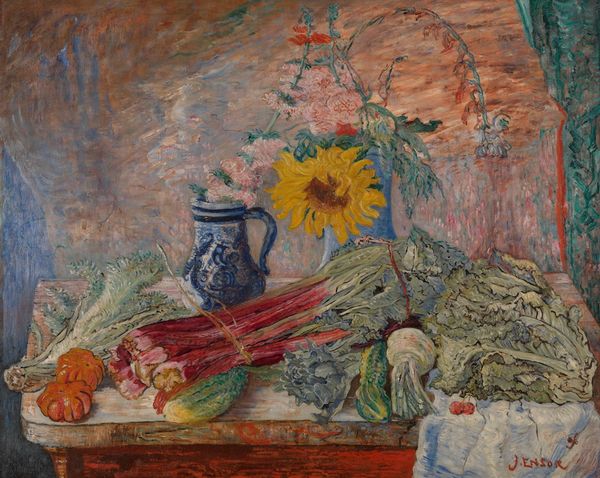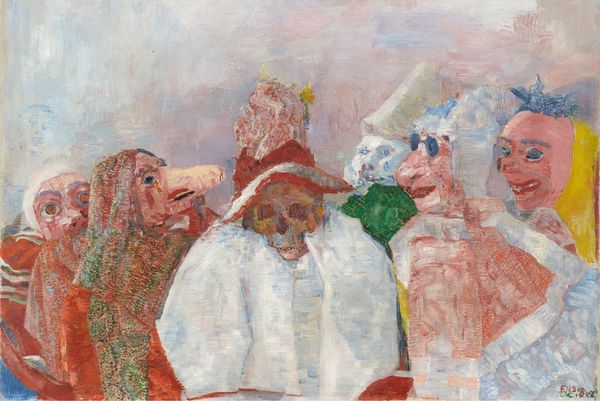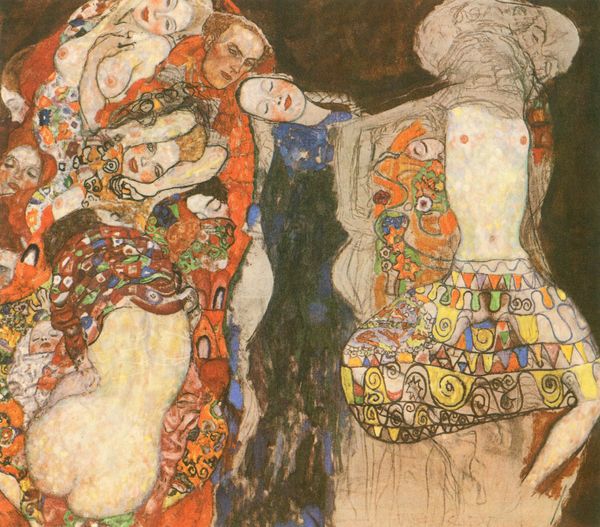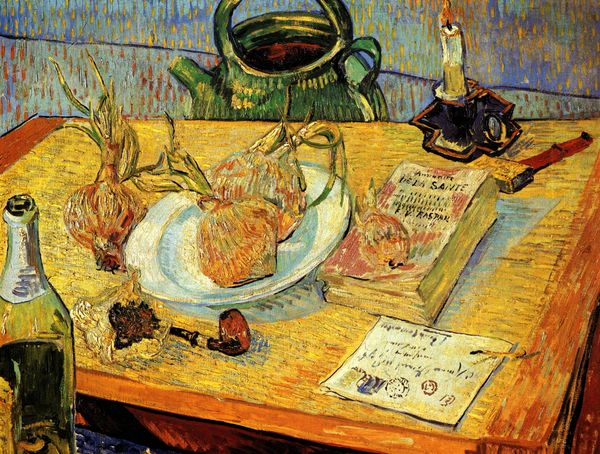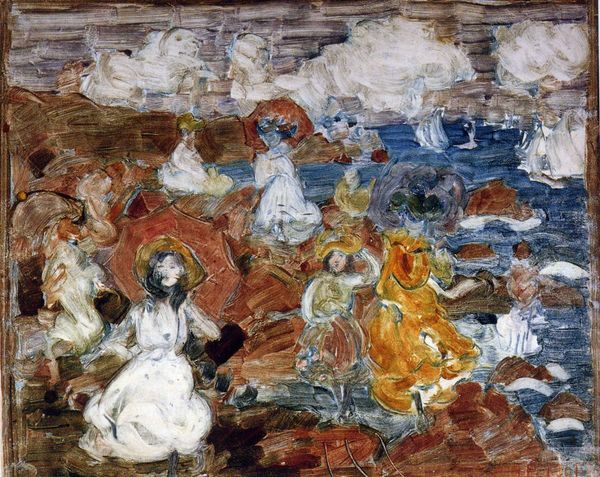
painting, oil-paint
#
portrait
#
painting
#
oil-paint
#
possibly oil pastel
#
handmade artwork painting
#
oil painting
#
vanitas
#
acrylic on canvas
#
symbolism
#
post-impressionism
Copyright: Public domain
James Ensor painted ‘Pierrot Lunaire’ with oil on canvas, though the date is unknown. Ensor was a Belgian artist associated with Expressionism and Surrealism; he was known for his interest in the grotesque. He was part of the avant-garde group Les XX, seeking to challenge the conservative art establishment of late 19th-century Belgium. As a historian, it's important to understand Ensor’s social context. Belgium at this time was undergoing rapid industrialization, leading to social inequalities and political tensions. The image is full of these tensions. Ensor's grotesque imagery can be seen as a critique of the bourgeoisie. In the painting, Pierrot sits next to death, surrounded by strange figures, which challenges conventional notions of beauty and taste. Historical sources such as exhibition catalogues, contemporary reviews, and biographical accounts of Ensor's life all shed light on the artist’s intentions and the cultural meanings of his work.
Comments
No comments
Be the first to comment and join the conversation on the ultimate creative platform.

